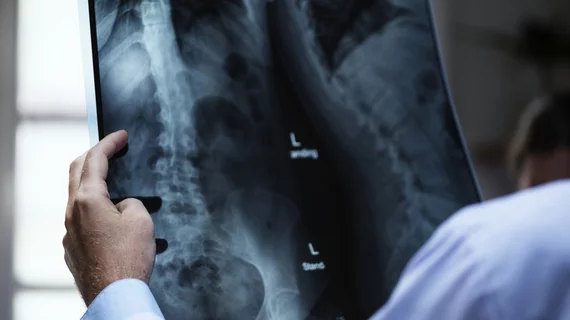Managing incidental radiologic findings: ACR-led initiative proposes several recommendations
An ACR-led initiative recently tackled the issue of poor completion rates for radiologist recommended follow-up care after incidental findings are identified. The proposed measures were recently published in the Journal of the American College of Radiology.
“Care gaps occur when radiology follow-up recommendations are poorly communicated or not completed, resulting in missed or delayed diagnosis potentially leading to worse patient outcomes,” corresponding author Nadja Kadom, MD, Director, Radiology Quality, Department of Radiology, with Children’s Healthcare of Atlanta, and co-authors wrote.
To address the issue at hand a technical expert panel (TEP) was assembled to advise quality measures that would improve communication between providers and patients and thus increase completion rates for follow-up care. The measures are meant to serve as a guideline for practices to create their own communication systems and means of follow-up improvement after noncritical actionable incidental findings are identified by radiologists.
The foundation of the ACR-led initiative is based on nine measures—four pertaining to outcomes and five relative to processes.
Suggested outcome measures include requiring closing the communication loop upon completion of follow-up recommendations for actionable incidental findings (AIFs), with specific guidance pertaining to findings of abdominal aortic aneurysm and pulmonary nodules, in addition to follow-up imaging and surveillance recommendations in the instances of cancer detection. For each of these measures, successful follow-up was defined as having recommended imaging completed within 30 days before and 60 days after the suggested follow-up interval.
“This measure serves the initiative’s primary goal, evaluating the percentage of patients with at least one AIF who received follow-up imaging within the recommended time interval,” the authors explained.
Process measures consisted of closed loop communication processes between patients, radiologists and referring providers who manage patients’ ongoing care. A tracking system that includes reminders and due dates was also included in the process measures.
“This facility- and system-level measure assesses the percentage of final reports containing AIFs with recommendations for follow-up imaging in which the findings were communicated to the patient.”
The authors noted the timeliness of the proposed measures, referring to CMS’ prioritization of measures of patient outcomes. Additionally, the measures, which can be catered to different practices as needed, could help close patient safety gaps and provide added insight into the appropriate and timely management of incidental findings, the experts suggested.
View all the detailed recommendations in the Journal of the American College of Radiology.
Related to incidental findings:
Free-text radiology reports hold clues for managing incidental pancreatic lesions
Subspecialty radiologists disagree with non-specialists’ incidental nodule guidance in 38% of cases
ACR releases new guidance to help radiologists manage incidental lung findings on CT scans

